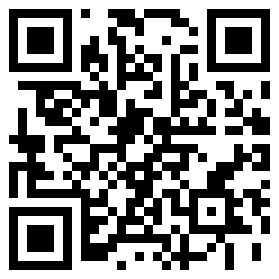Scientific literacy materi fluida statis siswa SMA: studi kasus
Abstract
Penelitian ini bertujuan untuk mendeskripsikan scientific literacy siswa sebelum dan setelah pembelajaran STEM berbasis masalah pada materi fluida statis. Metode penelitian ini adalah metode dekriptif pada salah satu kelas di SMAN 8 Muaro Jambi. Subjek penelitian ini terdiri atas 27 siswa yang meliputi 19 perempuan dan 8 laki-laki. Scientific literacy siswa diukur menggunakan 5 butir soal essai. Soal tersebut telah valid dan memiliki reliabilitas yang tinggi. Hasil analisis N-gain menunjukkan bahwa terdapat peningkatan. N-gain rata-rata masing-masing soal menunjukkan n-gain soal nomor 1 sebesar 0,23 (rendah), soal nomor 2 sebesar 0,46 (sedang), soal nomor 3 sebesar 0,25 (rendah), soal nomor 4 sebesar 0,156 (rendah), dan soal nomor 5 sebesar 0,625 (tinggi). Berdasarkan jawaban post-test siswa diperoleh kriteria scientific literacy siswa . Kriteria tersebut berdasarkan kriteria PISA 2015.
The purpose of this study was to describe the students' scientific literacy before and after STEM based on problem learning on static fluid. The method of this study was the descriptive method in one of class in SMAN 8 Muaro Jambi. The subjects were 27 students who consisted of 19 females and 8 males. The students' scientific literacy was measured by 5 essay questions. The instrument was valid and had the high reliability. The analyzed results of n-gain show that there is an improvement. The average of n-gain for each question shows that the n-gain of the numbers show 0,23 (low) in number 1, 0.46 (medium) in number 2, 0,25 (low) in number 3, 0,156 (low) in number 4 and 0,625 (medium) in number 5. Based on the students' post-test it gains the students' scientific literacy criteria. It's based on PISA 2015.
Kata kunci: STEM, Scientific Literacy, Fluida Statis
Full Text:
PDFReferences
E. Gucluer and T. Kesercioglu, “The Effect of Using Activities Improving Scientific Literacy on Students’ Achievement in Science and Technology Lesson,†Online Submiss., vol. 1, no. 1, pp. 8–13, 2012.
H. Fives, W. Huebner, A. S. Birnbaum, and M. Nicolich, “Developing a Measure of Scientific Literacy for Middle School Students,†Sci. Educ., vol. 98, no. 4, pp. 549–580, 2014.
OECD, PISA 2012 Assessment and Analytical Framework PISA 2012 Assessment and Analytical Framework. 2013.
Y. Shwartz, R. Ben-zvi, and A. Hofstein, “The use of scientific literacy taxonomy for assessing the development of chemical literacy among high-school students,†vol. 7, no. 4, pp. 203–225, 2006.
T. Larry D, Yore. David, Pimm. & Hsiao-Lin, “The literacy component of mathematical and scientific literacy,†Int. J. Sci. Math. Educ., vol. 5, no. July, pp. 559–589, 2007.
C. Rochman, “Penerapan Pembelajaran Berbasis Scientific Approach Model 5M dan Analisis Kemampuan Literasi Sains Peserta Didik pada Sekolah Mitra Universitas Islam Negeri Sunan Gunung Djati Bandung,†pp. 435–440, 2015.
A. Ali, I. Ardiansyah, D. Irwandi, and D. Murniati, “Analisis Literasi Sains Pada Materi Hukum Dasar Kimia Di Jakarta Selatan,†EduChemia, vol. 1, no. 2, pp. 149–161, 2016.
A. Schleicher, “PISA 2006: Science Competencies for Tomorrow ’ s World OECD briefing note for the United States,†no. December, 2007.
I. Produced, “OECD Programme for International Student Assessment 2015 PISA 2015 RELEASED FIELD TRIAL,†2015.
Academies National, Rising Above the Gathering Storm: Energizing and Employing America for a Brighter Economic Future. Washington: National Academies Press, 2007.
M. Kennedy, T J. and Odell, “Engaging Students In STEM Education,†vol. 25, no. 3, pp. 246–258, 2014.
A. Johnson, L., Adams Becker, S., Estrada, V.,&Freeman, NMC horizon report: 2015 K-12 edition. Austin: The New Media Consortium., 2015.
H. B. Gonzalez and J. J. Kuenzi, “Science, Technology, Engineering, and Mathematics (STEM) Education: A Primer,†. Congr. Res. Serv. Libr. Congr., 2012.
I. Bilgin, E. Şenocak, and M. Sözbilir, “The effects of problem-based learning instruction on university students’ performance of conceptual and quantitative problems in gas concepts,†Eurasia J. Math. Sci. Technol. Educ., vol. 5, no. 2, pp. 153–164, 2009.
E. Maryam, “Pengaruh Menggunakan Model PBL ( Problem Based Learning ) Terhadap Hasil Belajar IPA Fisika SMP N 7 Kota Bengkulu,†vol. 4, no. 1, pp. 18–21, 2017.
Y. N. Silta, “Pengembangan Sensor Air Hujan Menggunakan Hukum Archimedes Untuk Jemuran Pakaian Otomatis Berbasis Lingkungan Sebagai Media Pembelajaran Fisika,†vol. 2, no. 1, pp. 33–37, 2015.
J. T. Guthrie, A. Wigfield, and C. Vonsecker, “Effects of Integrated Instruction on Motivation and Strategy Use in Reading,†vol. 92, no. 2, pp. 331–341, 2000.
dan I. H. N Khoeruningtyas, A Permanasari, “STEM learning in Material of Temperature and its Change to Improve Scientific Literacy of Junior High School.,†J. Pendidik. IPA Indones., vol. 5, no. 1, pp. 94–100, 2016.
A. Permanasari, “STEM Education : Inovasi dalam Pembelajaran Sains,†pp. 23–34, 2016.
R. R. Hake, “Interactive-engagement versus traditional methods: A six-thousand-student survey of mechanics test data for introductory physics courses,†Am. J. Phys., vol. 66, no. 1, pp. 64–74, 1998.
I. Ismail, A. Permanasari, and W. Setiawan, “Efektivitas Virtual Lab Berbasis STEM dalam Meningkatkan Literasi Sains Siswa dengan Perbedaan Gender STEM-Based Virtual Lab Effectiveness in Improving the Scientific Literacy of Students with Gender Differences,†vol. 2, no. 2, pp. 190–201, 2016.
DOI: http://dx.doi.org/10.12928/jrkpf.v5i1.9379
Refbacks
- There are currently no refbacks.
Copyright (c) 2018 Jurnal Riset dan Kajian Pendidikan Fisika
Jurnal Riset dan Kajian Pendidikan Fisika | Journal of Research and Physics Education Studies
Kampus 4 Universitas Ahmad Dahlan
Jl. Kolektor Ring Road Selatan, Tamanan, Banguntapan, Bantul, Daerah Istimewa Yogyakarta
Telp. (0274) 563515, ext. 43514; Fax. (0274) 564604, Hp. +62822 3634 7674
Email: jrkpf@pfis.uad.ac.id
e-ISSN: 2355-620X
This work is licensed under a Creative Commons Attribution-NonCommercial 4.0 International License
Best viewed on Mozilla Firefox at screen resolution 1366 x 768 pixels.
View My Stats







